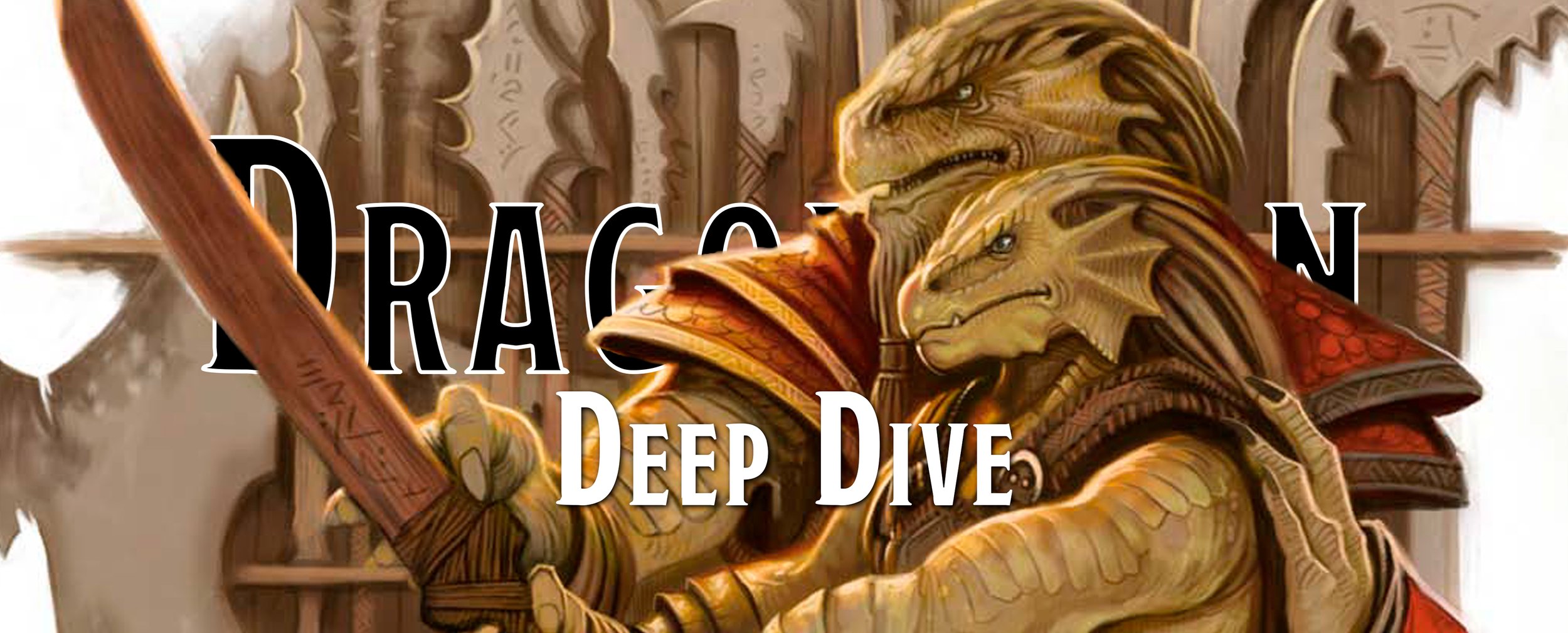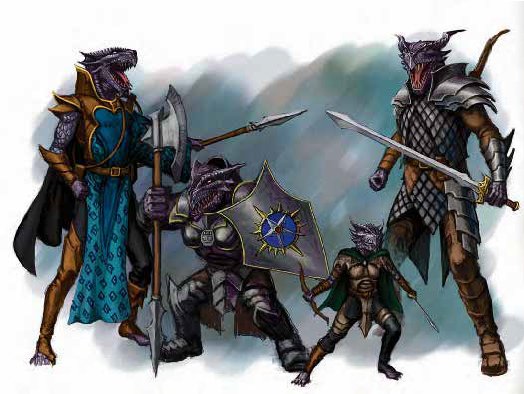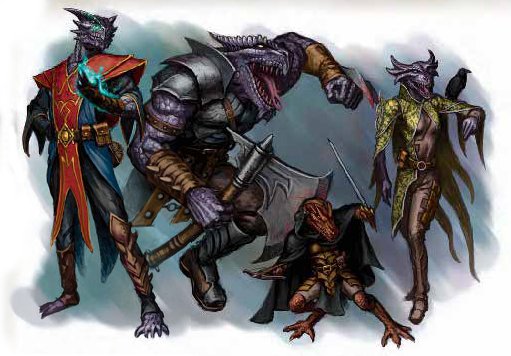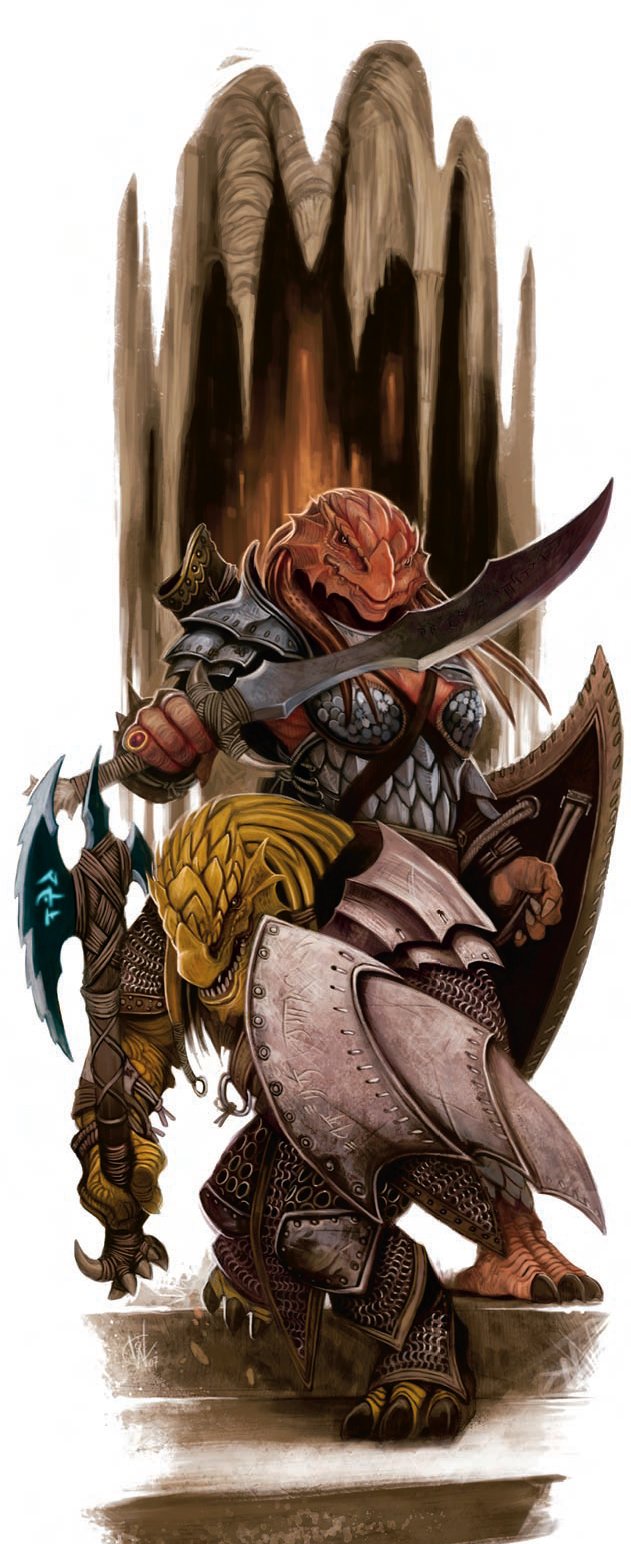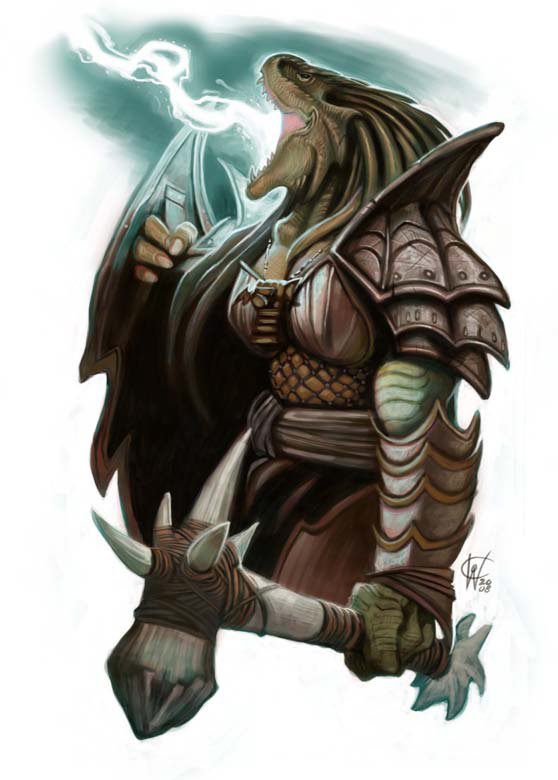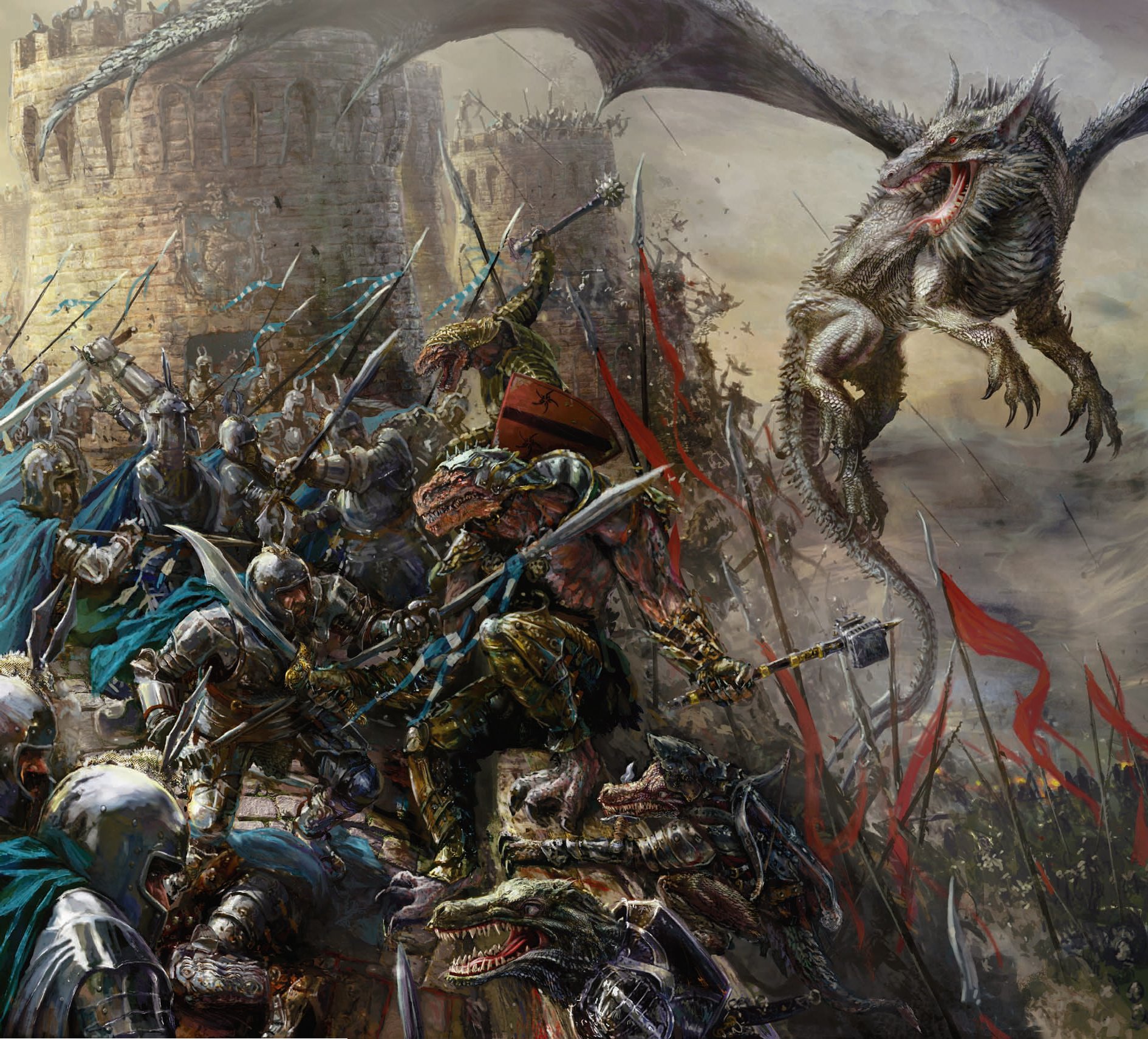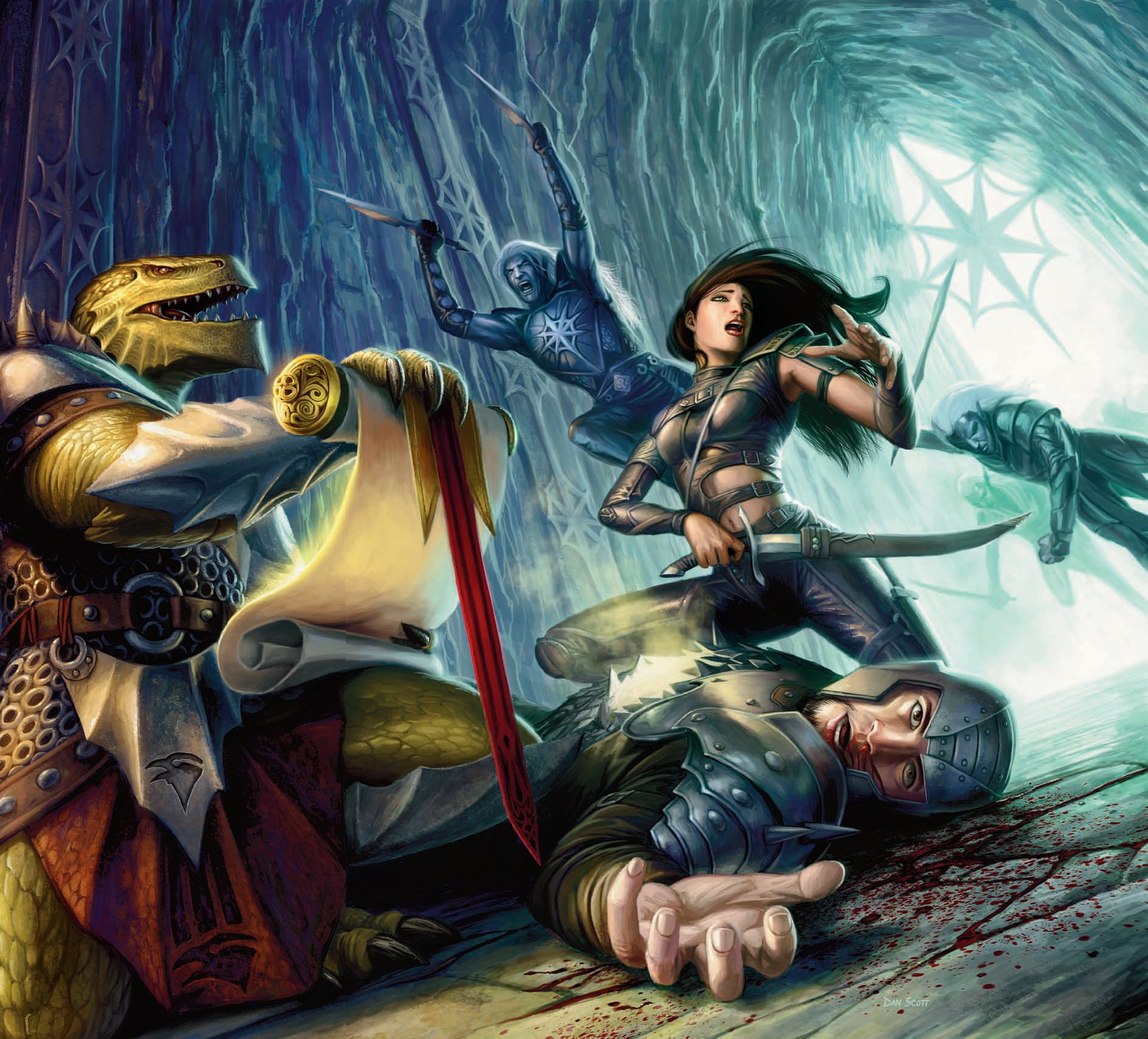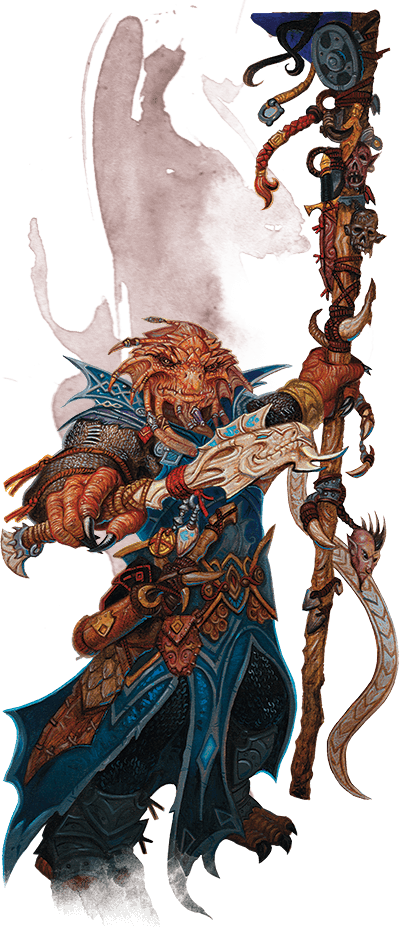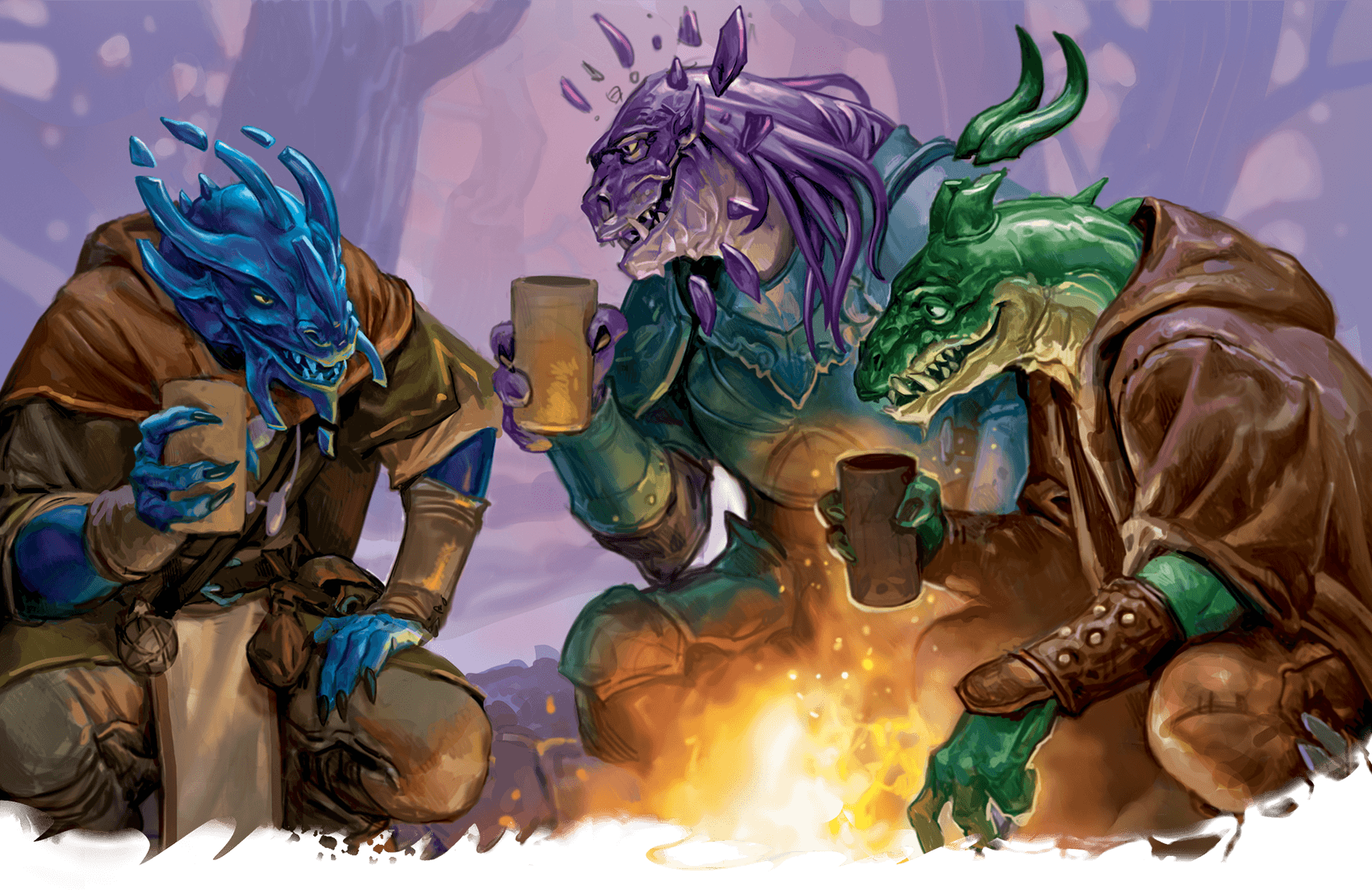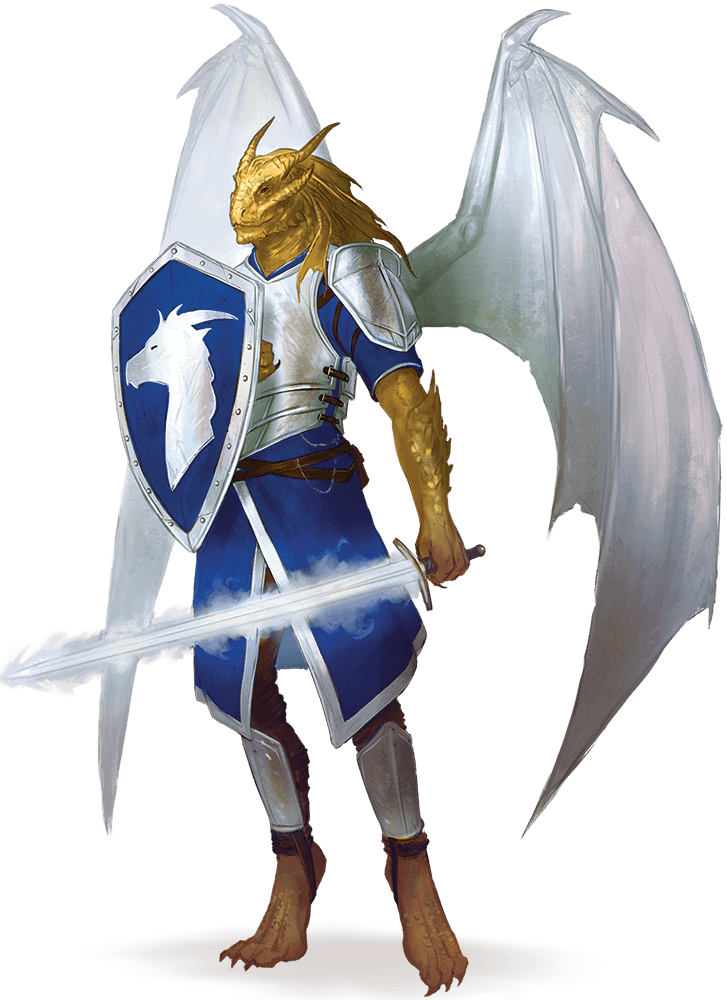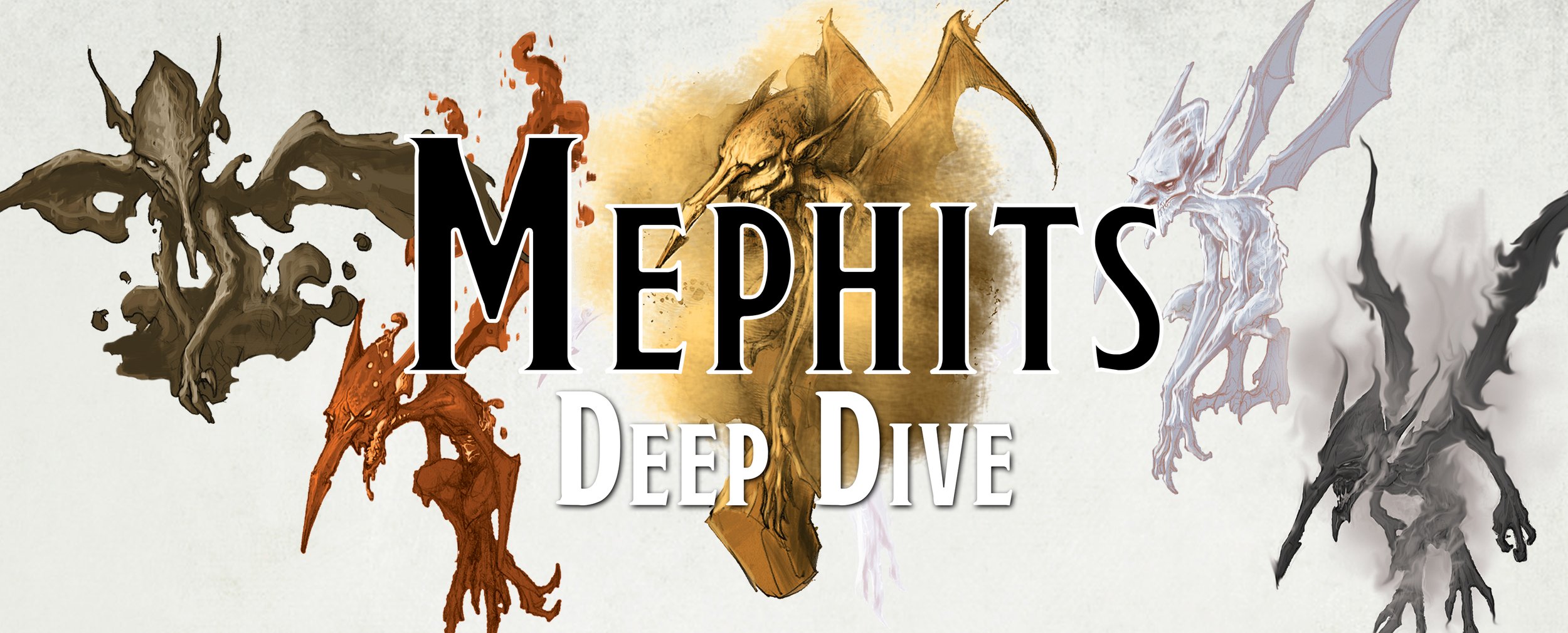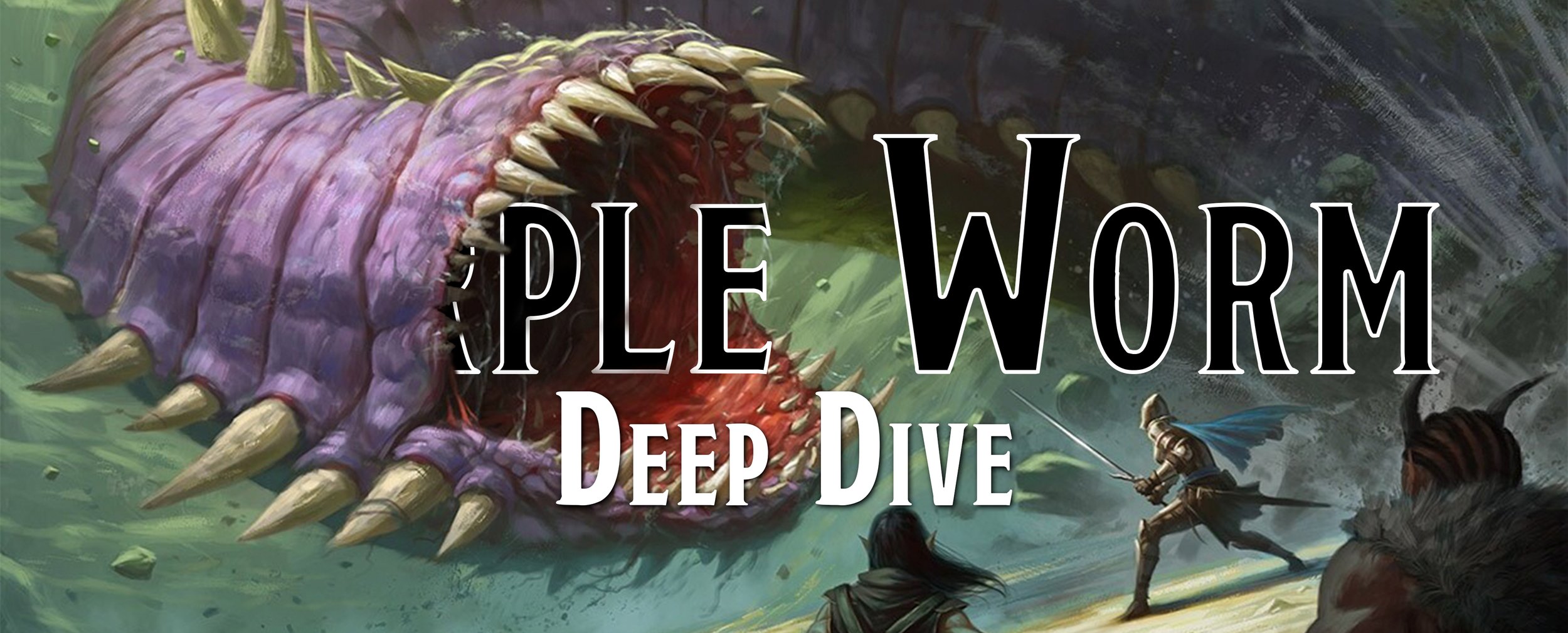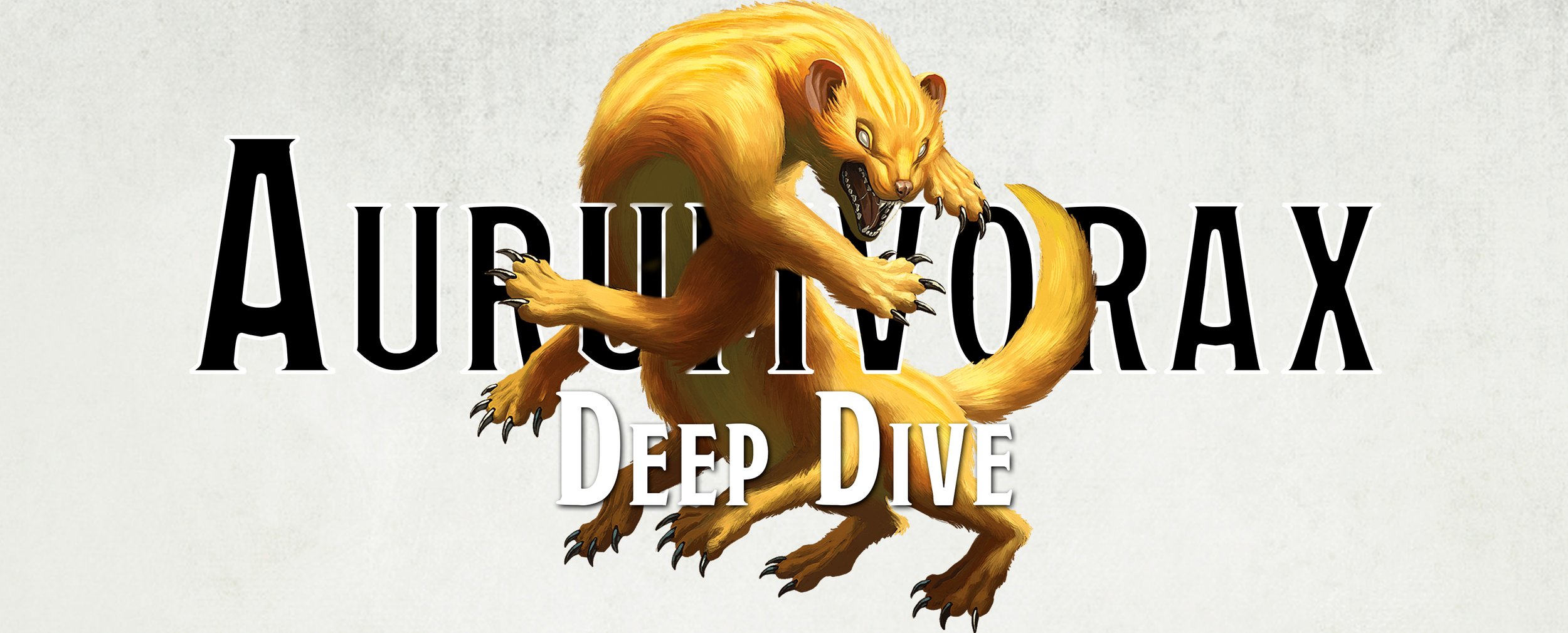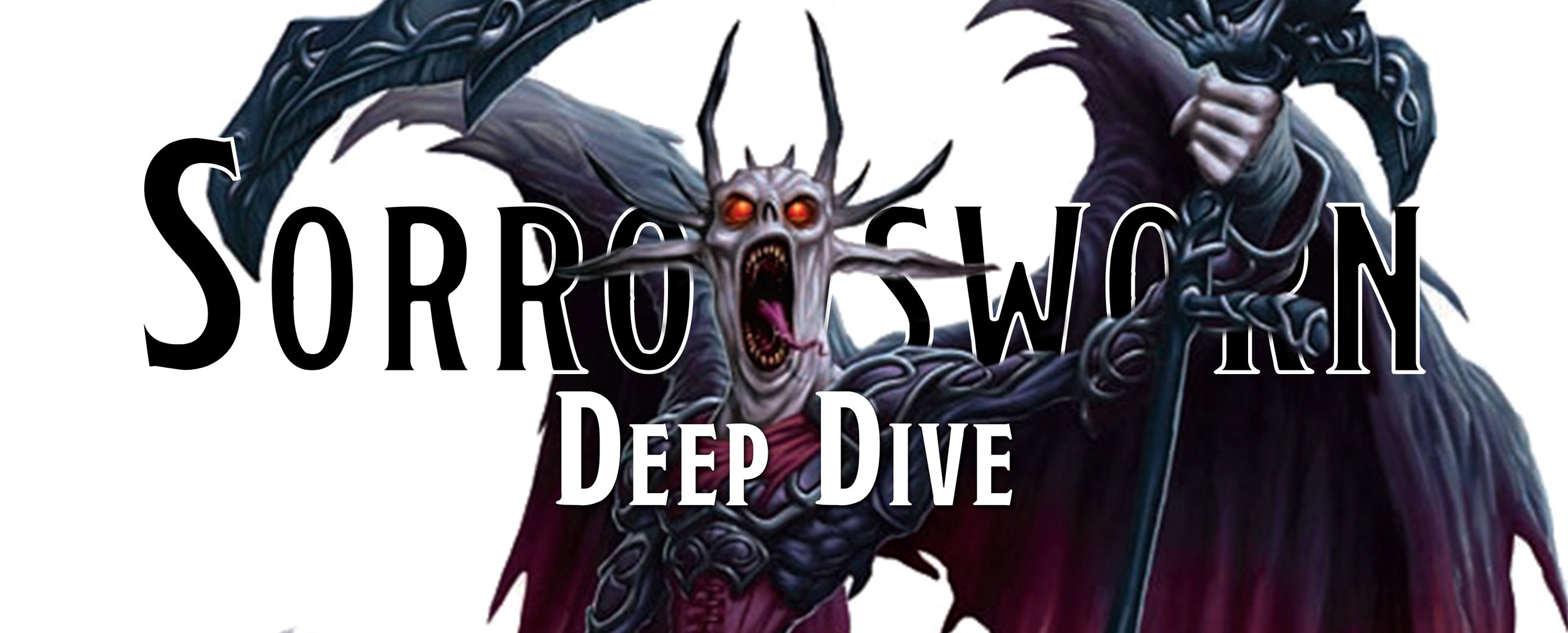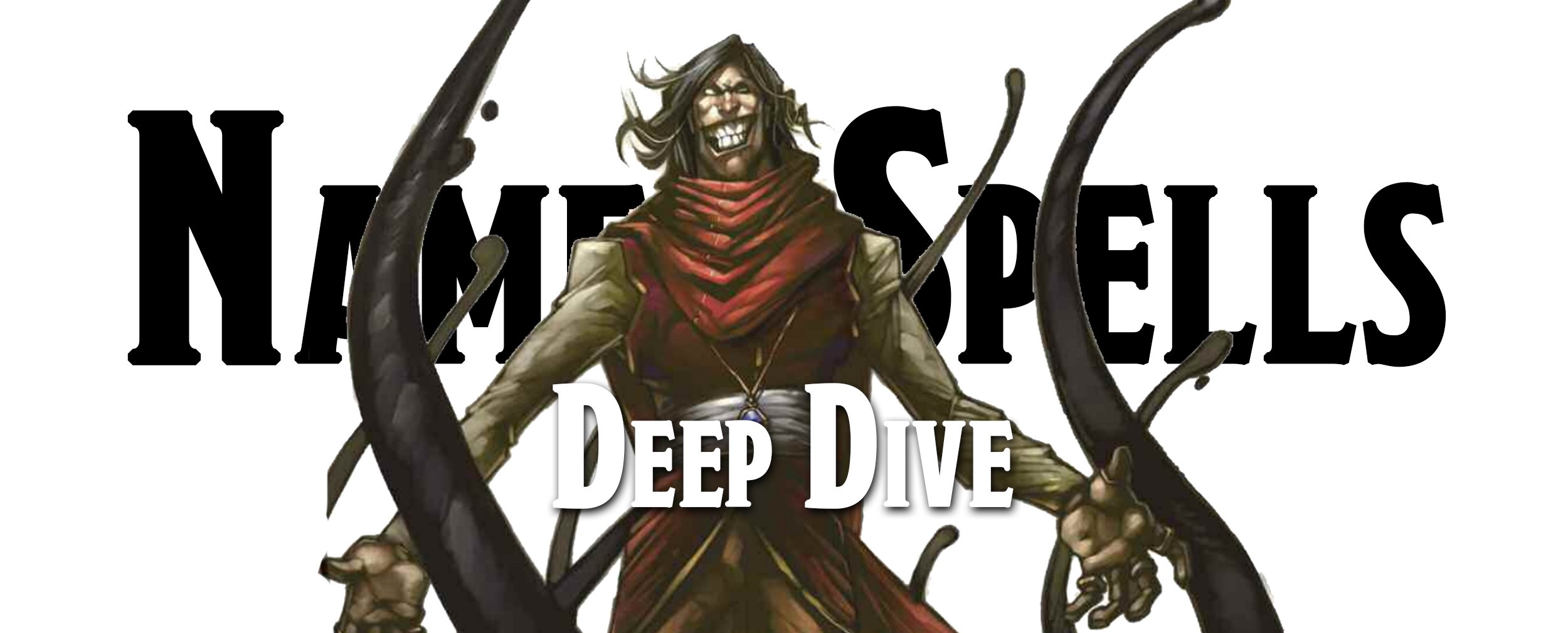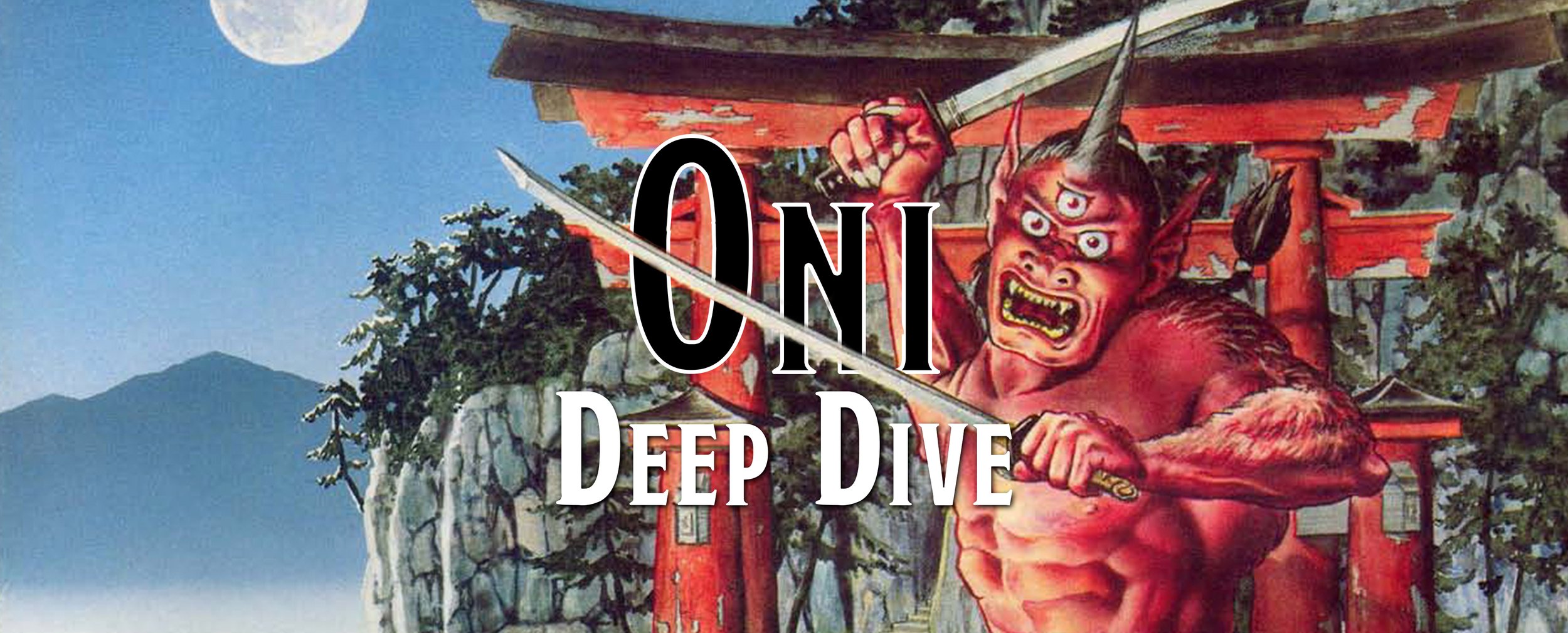Deep Dive - The Dragonborn
Scaled humanoids with a penchant for breathing fire, cold, acid, lightning, or some other energy, the Dragonborn are a race of creatures said to be descended from dragons themselves, or perhaps a race created by a now long-dead dragon god. Then again, they may just be the hand-selected champions of a great dragon god seeking to put an end to the marching of evil dragon legions. While playing as a dragon may not be for everyone, they definitely have their claws in our hearts.
Oh, and they are not draconians. This is a hill we will die on.
3e/3.5e - Dragonborn of Bahamut
Stat Bonuses: +2 bonus to Constitution
Stat Penalities: -2 penalty to Dexterity
Type: Humanoid (Dragonblood)
Age: After a dragonborn underoes the Rite of Rebirth, she emerges as an adult creature regardless of her previous age. If she lives for 200 years, she enters middle age.
Armor Class: +2 dodge bonus to AC against creatures of the dragon type
Frightful Presence: Immunity to the Frightful Presence of dragons
Draconic Aspect: Upon completing the Rite of Rebirth, a dragonborn chooses which of the following three aspects to manifest (Heart, Mind, Wings). Once the choice is made, it cannot be changed.
Languages: Draconic
Favored Class: Fighter
Races of the Dragon, 2003 Wizards of the Coast / Steven Belledin
The Dragonborn, or should we say Dragonborn of Bahamut, first appears in Dungeons & Dragons in the sourcebook Races of the Dragon (2003). What is strange about this race of draconic creatures is that they are a completely created race, they can’t create more of their kind through breeding, but by champions of Bahamut willing to give their body and life solely to the dragon god of justice. They are warriors against the rising tide of evil, specifically against the spawn and evil dragons that serve Tiamat, the dragon goddess of greed and queen of evil dragons.
Any creature who is noble, brave, and not evil-aligned can become a Dragonborn, but few people are willing to do so. To undergo the change requires stripping away your previous life, sacrificing your relationship with your friends and family, and ultimately removing your original identity. Those who are willing to join Bahamut in the fight against Tiamat and her evil dragons are also few and far between. It’s a tough choice, but Bahamut will be there with you every step of the journey, so you never are truly alone as you can always feel his presence. Of course, you also get to be part dragon.
No matter what race you are, you can become a Dragonborn as this race is created, not born. When someone decides to answer the call and perform the Rite of Rebirth, they can be anyone so long as they meet two prerequisites, they are not evil and they have an Intelligence score of at least 3. That’s right, basically, any adventurer can take on this task and at any level. Though this might be difficult for some murder-hobo players to achieve since so many think that casting a fireball spell on an orphanage is a great way of getting a one-silver-piece discount at the general store, but it’s pretty achievable for most people to join up with Bahamut and take on a crusade against evil dragons everywhere.
Races of the Dragon, 2003 Wizards of the Coast / Emily Fiegenschuh
If you go through with the rite, because who needs family anyways, you must craft a symbolic egg that requires 100 gold pieces in rare materials plus a handful of scales from a metallic dragon. Once your egg is crafted, you then spend 24 hours meditating and fasting. Once it’s time to take a nap, you then crawl into your egg, it seals up, and for the next 24 hours, you undergo a sort of metamorphosis like an ugly caterpillar turning into a draconic butterfly. Once you wake up, your physical form turns into that of one of draconic heritage.
Every Dragonborn looks kind of similar, you have scales for skin, you have a dragon head, you have horns, you have teeth and claws, but you retain the same general racial look that you had before. If you were a dwarf, you are kind of a squat and stout Dragonborn only a few feet tall. If you were an orc, you are big and burly, like an orc, but with dragon-like features. It’s kind of like a skin in a video game where your base form doesn’t change, just your skin-deep appearance.
Now, it’s great and all that you get to look like a dragon and spend the rest of your life fighting evil dragons, but what else might you get? You get a bonus to your Constitution score, a penalty to your Dexterity score, a bonus to your Armor Class when fighting other dragons, you get to call yourself a dragon, you can’t be frightened by other dragons, and you get to take on a special blessing of dragons known as your Draconic Aspect. When you wake up from your egg slumber, you have to make a very important choice that can’t be changed going forward. This decision informs what kind of Dragonborn you are and you get to choose Heart, Mind, or Wings.
Races of the Dragon, 2003 Wizards of the Coast / Eric Polak
If your Draconic Aspect is Heart, you get a breath weapon that starts off small, but as you get to higher and higher levels, its area of effect and damage increases until you have a proper breath weapon that will scour the countryside, just like a real dragon. On the other hand, the Mind aspect gives you immunity to paralysis and magical sleep effects, you gain darkvision that slowly increases in range as you level up, and eventually even blindsense so that you can sense your evil enemies even when they blind you with pocket sand. The last aspect, Wings, gives you wings and you gain a limited bit of flight that is more like gliding than actually flying. As you level up, your wings get stronger and stronger until they can eventually hold up your full weight and you can start flapping around. This flight is limited at first with only a few seconds of air time, but once you reach level 12, it becomes unlimited.
Unfortunately, these cool abilities come at a price and that price isn’t that you have to constantly be fighting against Tiamat and her evil dragons, though you do still have to do that. Instead, you have to give up your previous life, and not just your family and friends, but also your previous race. When you become a Dragonborn, you lose out on racial traits you might’ve gained as a dwarf, elf, or even goliath. We are curious what happens if a kobold tries to become a Dragonborn, we assume nothing happens since a kobld is a dragon already.
You still retain any racial Hit Die you might’ve had, you keep any bonuses and penalties you took to your ability scores, your size and speed remain the same. The only thing that changes are racial traits like skill bonuses, spell-like abilities, bonuses to attacks or saves, and other extra abilities. In exchange, you get to be a freaking dragon and either breathe fire, see a bit better in the dark, or get some dragon wings. Two of those options seem like a win to us and we are quickly preparing our egg nests to hibernate in.
The sourcebook also contains all sorts of information about how Dragonborn dress, how they see other races, how they conduct themselves, what they do with their leisure time, that the only other person they love is Bahamut, and their culture. We can sum it up in a single sentence. Dragonborn represent Bahamut and always seek to loosen Tiamat’s hold on the world. Dragonborn are always dressed nicely, as befit being the adopted children of the god of good dragons and they spend their leisure time training and preparing for fighting more agents of Tiamat. There is nothing more important to them than this ongoing fight between good and evil, and while their numbers may be small, they are mighty and will stop at nothing to defeat Tiamat.
Races of the Dragon, 2003 Wizards of the Coast / Eric Polak
4e - Dragonborn
Racial Traits
Average Height: 6´ 2˝–6´ 8˝
Average Weight: 220–320 lb.
Ability Scores: +2 Strength, +2 Charisma
Size: Medium
Speed: 6 squares
Vision: Normal
Languages: Common, Draconic
Skill Bonuses: +2 History, +2 Intimidate
Dragonborn Fury: When you’re bloodied, you gain a +1 racial bonus to attack rolls.
Draconic Heritage: Your healing surge value is equal to one-quarter of your maximum hit points + your Constitution modifier.
Dragon Breath: You can use dragon breath as an encounter power.
Player’s Handbook, 2008 Wizards of the Coast / William O’Connor
No longer forced to serve Bahamut, the Dragonborn become a full race in the Player’s Handbook (2008). Now all creatures that would become a Dragonborn are hatched from eggs, like proper dragons, and no longer can your gnome hope and pray that Bahamut will turn them into one of these majestic creatures. You have to be born with it.
Dragonborn once had an ancient empire, known as Arkhosia, that ruled over much of the known world at the time, but their empire crumbled eons ago. This happened when the tiefling empire of Bael Turath and the Dragonborn of Arkhosia decided there wasn’t enough room for both world-spanning realms in a single world, which brought both kingdoms to their knees. Nowadays, few Dragonborns remain, with many traveling the world in search of honor and the chance to cement their names in legend. They are warriors to their core, pushing themselves to excellence, which makes them rather arrogant and proud. Luckily, they aren’t entirely abrasive, as they are quick to admire the accomplishments of others… you just have to prove yourself and push yourself to excel in something that the Dragonborns care about.
Looking at these creatures, you can easily tell how they got their name, as they resemble humanoid dragons. These tail-less, wing-less dragons are basically lizards, covered in a scaly hide that ranges in color. The most common colors are gold, scarlet, copper, bronze, and other hues that match chromatic and metallic dragons. Unlike dragons, a Dragonborn’s scales don’t give you much of a clue about them as their coloring has no reflection on their alignment or, more importantly, what the energy type of their breath weapon will be. And yes, they all have a breath weapon, so we suggest you don’t get into a shouting match with them. They’ll win, and your face will melt off.
Monster Manual, 2008 Wizards of the Coast / William O’Connor
Moving quickly, as this edition features quite a dragon hoard of information, we jump over to the Monster Manual (2008), which features four Dragonborn to test your mettle against. These stat blocks are standard fare when it comes to fighting humanoids, but the most exciting part is the lore found here. As we’ve discussed before, Dragonborn are considered honorable warriors who don’t break their oaths, making them sought-after mercenaries. Since they have no true land to call their own as their empire collapsed long ago, and we guess it was just too much work to make a new one, many wander the lands as mercenaries and adventurers looking to conquer any challenge they can find.
Dragon #365, July 2008 Wizards of the Coast / William O’Connor
As we stated previously, the release of the fourth edition is packed with Dragonborn content. At the same time as the release of the Player’s Handbook and the Monster Manual is the release of the article Ecology of the Dragonborn written by Chris Sims in Dragon #365 (July 2008). Step aside, Bahamut; it’s time for Io, the greatest dragon god, to lay claim over the Dragonborn. Or at least, Io would if it weren’t for the fact that that god is dead. It is said that the Dragonborn had sprung up from the dragon god’s blood, and Tiamat and Bahamut formed from the two halves of Io’s sundered body, diametrically opposed to each other, both trying to influence Dragonborn to join their side.
This article goes into great depth, reviewing history, personality, leisure, religion, art, magic, and more about the Dragonborn. While we won’t touch on everything, several things are worth discussing. Dragonborns have, since their creation, created clans that unify families in close geographic areas. These clans often had a dragon as the clan head, though not all of them. Sometimes a dragon might die, or there were no dragons with a similar temperament to the Dragonborns to unite in a clan.
In addition, there have been several Dragonborn nations that have waxed and waned through the eons. Still, the biggest and most extraordinary was that of Arkhosia, which was formed from an array of Dragonborn state cities. Since dragons are often the rulers over Dragonborn, these dragon nobles who controlled the state cities created a dragon bureaucracy ruled by a single dragon emperor dubbed the Golden One, probably because they were a gold dragon. This progressive empire sought to bring honor and good to the world, even banishing Tiamat’s worship to secrecy. But this empire wouldn’t be allowed to continue as the foul empire of Bael Turath, ruled by tieflings and devils, collided with Arkhosia.
Dragon #365, July 2008 Wizards of the Coast / Brian Hagan
After a war that spanned hundreds of years, both empires collapsed into ruins. Many dragon nobles, including the Golden One, and many lesser lords of the Nine Hells were killed. This left the Dragonborns without a land to claim as their own, and so they dispersed into the world, integrating themselves into diverse societies and making do with their new lot in life. Almost all Dragonborn look back to their pasts with fondness, hoping that one day they might continue the mission of their once great empire.
As one might expect, the Dragonborn appears in Draconomicon: Chromatic Dragons (2008) and in Draconomicon: Metallic Dragons (2009). In the Chromatic Dragon sourcebook, we get more information and six more Dragonborn stat blocks to send our players heading for the hills, far from any dragonfire they might take. The Chromatic Dragon sourcebook primarily focuses on the relationship between Tiamat and Dragonborn, who serve her. These Dragonborn find Tiamat’s allure and promises of gold and power too strong to resist and will pledge their very souls to the dragon goddess.
Draconomicon: Chromatic Dragons, 2008 Wizards of the Coast / Vincent Proce
The Metallic Dragons book has much less information about Dragonborn, with just a few bits and pieces sprinkled throughout. Metallic dragons, and their corresponding Dragonborn, are likely to become guardians of dwarves, elves, halflings, humans, and tieflings for various reasons, mainly because they often represent the power of society and the goodness of cities. And that’s kind of about it in this book. Many of their other references are just talking about how Dragonborn align themselves with Bahamut, metallic dragons, and offer a few Dragonborn as foes to fight because they choose the chromatic side… which is the evil side.
Player’s Handbook Races: Dragonborn, 2010 Wizards of the Coast / Chris Seaman
If you are searching for more information on the Dragonborn, you are in luck with the release of Player’s Handbook Races: Dragonborn (2010). The book features over thirty pages of information on these very tall kobolds, expanding on the information in the Ecology of the Dragonborn article. Beyond diving deeper into the history and society of Dragonborn, we also get additional paragon paths, new backgrounds, powers, feats, and more, all exclusive to Dragonborn. We get feats allowing you to hit harder with your breath weapon, turning you into a proper dragon, and an epic destiny that turns you into the Avatar of Io. This powerful divine servant seeks to bring back Io and for you to become Io’s personal herald.
Jumping back into Dragon Magazine, we have the article Power of Dragons written by Greg Tito in Dragon #385 (March 2010), and Bloodlines of Arkhosia: Dragonfear, written by Peter Schaefer in Dragon #388 (June 2010), which features even more Dragonborn options. Each article offers new feats designed for Dragonborn, like gaining a frightening countenance or following in the claw-prints of mithral dragons and becoming a paragon of Io, seeking to rid the world of tyranny.
This leads us to our last mention of the Dragonborn in the monster book Monster Manual 3 (2010). Here we don’t get any new Dragonborns but rather learn that the thri-keen, humanoid insects, were once the subjugated vassals of Dragonborn. Before the ancient empire of Arkhosia was a large nation of Thri-keen known as Val-Karri. In time, Val-Karri would fall to the Dragonborn, become dismantled, and the thri-keen found themselves enslaved. It wasn’t until the collapse of the Arkhosia empire to the tiefling empire of Bael Turath that the thri-keen were able to free themselves. Perhaps that ancient empire wasn’t all those Dragonborns made it out to be.
Player’s Handbook, 2008 Wizards of the Coast / Dan Scott
5e - Dragonborn
Ability Score Increase. Your Strength score increases by 2, and your Charisma score increases by 1.
Age. Young dragonborn grow quickly. They walk hours after hatching, attain the size and development of a 10-year-old human child by the age of 3, and reach adulthood by 15. They live to be around 80.
Size. Dragonborn are taller and heavier than humans, standing well over 6 feet tall and averaging almost 250 pounds. Your size is Medium.
Speed. Your base walking speed is 30 feet.
Draconic Ancestry. You have draconic ancestry. Choose one type of dragon from the Draconic Ancestry table. Your breath weapon and damage resistance are determined by the dragon type, as shown in the table.
Breath Weapon. You can use your action to exhale destructive energy. Your draconic ancestry determines the size, shape, and damage type of the exhalation.
Damage Resistance. You have resistance to the damage type associated with your draconic ancestry.
Languages. You can speak, read, and write Common and Draconic.
Player’s Handbook, 2014 Wizards of the Coast / Chris Seaman
The Dragonborn appear once more in the Player’s Handbook (2014), and as tradition demands, they have a new genesis for their race. This time they are the literal offspring of dragons, or at least, they were hatched from dragon eggs. Perhaps a lady dragon spent a lovely evening with a bard who likes a challenge.
Dragonborn appear like bipedal dragons, minus the tail, the wings, and the huge size. Though they are still quite tall, standing typically around six-and-a-half feet. They have scaled hides, like the majestic kobold or lowly dragon, though due to generations of interbreeding, they have a fairly uniform color of rust, gold, scarlet, or copper. There are a few with scales that are far closer to their original progenitors, like scorching red, acid green, and so on, though such scales are rare and may only be a handful of scales instead of a Dragonborn’s entire hide.
Up first we learn that a Dragonborn’s clan is the most important element in their life, though it is unclear as to how big a clan is, who is in a clan, who leads the clan, and what actually the clan does. Regardless, if a Dragonborn does something to dishonor the clan, maybe by using their breath weapon to spew black acid into the supply of holy water in a temple dedicated to Bahamut, then they are exiled from their clan and are forced to wander the world alone. This is the worst fate for the Dragonborn as they are dishonored and cut off from their friends, family, and clutchmates.
Fizban’s Treasury of Dragons, 2021 Wizards of the Coast
If you are hoping to play as a Dragonborn, you get bonuses to your Strength and Charisma score, as well as gain a draconic ancestry, which is the dragon type that you are descended from or at least a dragon type that you feel the closest to. This dragon type informs the damage type of your breath weapon, and you also gain resistance to that damage, and it is based on what dragon you are descended from, so a red dragon would give you a fire breath, while a white dragon would allow you to breath cold energy.
Sadly, this edition is rather sparse when it comes to highlighting how cool these very tall kobolds are, but we do get more Dragonborn in Fizban’s Treasury of Dragons (2021) which feature three new Dragonborn races you can be! Well not really, it provides new options for highlighting your Dragonborn towards a specific group of dragons, either as a Chromatic Dragonborn, Metallic Dragonborn, or Gem Dragonborn.
Fizban’s Treasury of Dragons, 2021 Wizards of the Coast
Chromatic Dragonborn get not only their breath weapon and resistance, like all other Dragonborn, but they can also become immune to their specific dragon energy for a full minute once per day. Gem Dragonborn get a psionic mind which grants them telepathy, but also the ability to fly at 5th level, though it only lasts for a minute and can only be used once per day. The last group, Metallic Dragonborn, gain a second breath weapon, like your metallic dragon progenitors, that allow you to either incapacitate creatures or knock creatures prone or back up to 20 feet.
Fizban’s Treasury of Dragons, 2021 Wizards of the Coast
While these abilities are cool, it doesn’t exactly tell us anything more about Dragonborn except that they are really dragon-like in their abilities. If we flip to the bestiary in the book, though, we do get information on Dragonborn Champions, specifically the Dragonborn of Bahamut, Dragonborn of Sardior, and the Dragonborn of Tiamat. Champions have a unique spiritual connection to their divine dragon ancestors, so we are at least referencing the origination of this race from 3rd edition.
As you might guess, Bahamut champions are focused on doing good and are called platinum knights. They seek to protect the world from evil dragons. Sardior is a long-dead dragon god, perhaps taking the place of Io, whose champions represent the best of gem dragons. These champions use the power of their mind to defeat their foes and their breath weapon exhales heat on their enemies, the same type of breath weapon that Sardior was said to have. Tiamat’s champions are the evil chromatic Dragonborn who seek power over others. They are granted immense strength and their breath weapon uses necrotic energy to waste their opponents away.
It seems like the Dragonborn’s great empire has been lost to time, with no other meaningful mentions of Dragonborn to tell in this edition.
Fizban’s Treasury of Dragons, 2021 Wizards of the Coast
Dragonborn are a powerful dragon-humanoid race with a reputation for honor. While their numbers might be few in the world, they are nonetheless strong and resilient, just like their dragon progenitors. If you do end up speaking with a member of this race, it’s probably for the best if you don’t call them kobolds.
If you enjoy our Deep Dive series, consider
supporting us on Patreon and following us on Twitter!

